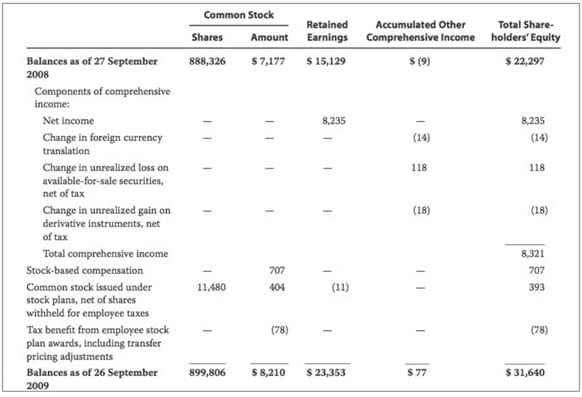Equity is the owners’ residual claim on a company’s assets after subtracting its liabilities.
The six components of equity are:
The statement of changes in equity presents information about the increases or decreases in a company’s equity over a period of time. IFRS requires the following information in the statement of changes in equity:
U.S. GAAP requirement is for companies to provide an analysis of changes in each component of equity as shown in the balance sheet.
Sample Statement of Changes in Stockholders’ Equity

